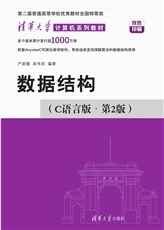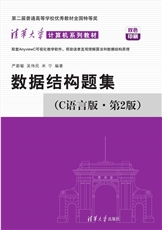





定价:69元
印次:1-3
ISBN:9787302374848
出版日期:2015.06.01
印刷日期:2021.12.17
图书责编:谢琛
图书分类:教材
无。
The Chinese edition of this book is firstly published in 1999, the second edition is published in 2001, the third edition is published in 2003, and the fourth edition is published in 2010. This English edition is based on the former Chinese editions, which the author took advice widely from readers and colleagues, consulted the latest material and based on his teaching experience to complete. 1. Background of Writing This Book C++ is an objectª²oriented programming language, which is evolved from C. C++ has two main characteristics: one is its full compatibility with C and the other is that it supports objectª²oriented methods. The objectª²oriented program design encapsulates data and re...
1.1The Development of Computer Programming Language1
1.1.1Machine Language and Assembly Language1
1.1.2Highª²level Language2
1.1.3Objectª²oriented Language2
1.2Objectª²oriented Method3
1.2.1The Origin of Objectª²oriented Method3
1.2.2Basic Concepts of Objectª²oriented 5
1.3Objectª²oriented Software Development6
1.3.1Analysis7
1.3.2Design7
1.3.3Programming7
1.3.4Test7
1.3.5Maintenance8
1.4Representation and Storage of Information8
1.4.1Digital System of Computer8
1.4.2Conversions among Numeral Systems10
1.4.3Storage Units of Information13
1.4.4Binaryª²coded Representation13
1.4.5Fixed Point Number and Floating Point Number17
1.4.6The Number Range Tha... 查看详情



 电子书
电子书
 在线购买
在线购买
 分享
分享











